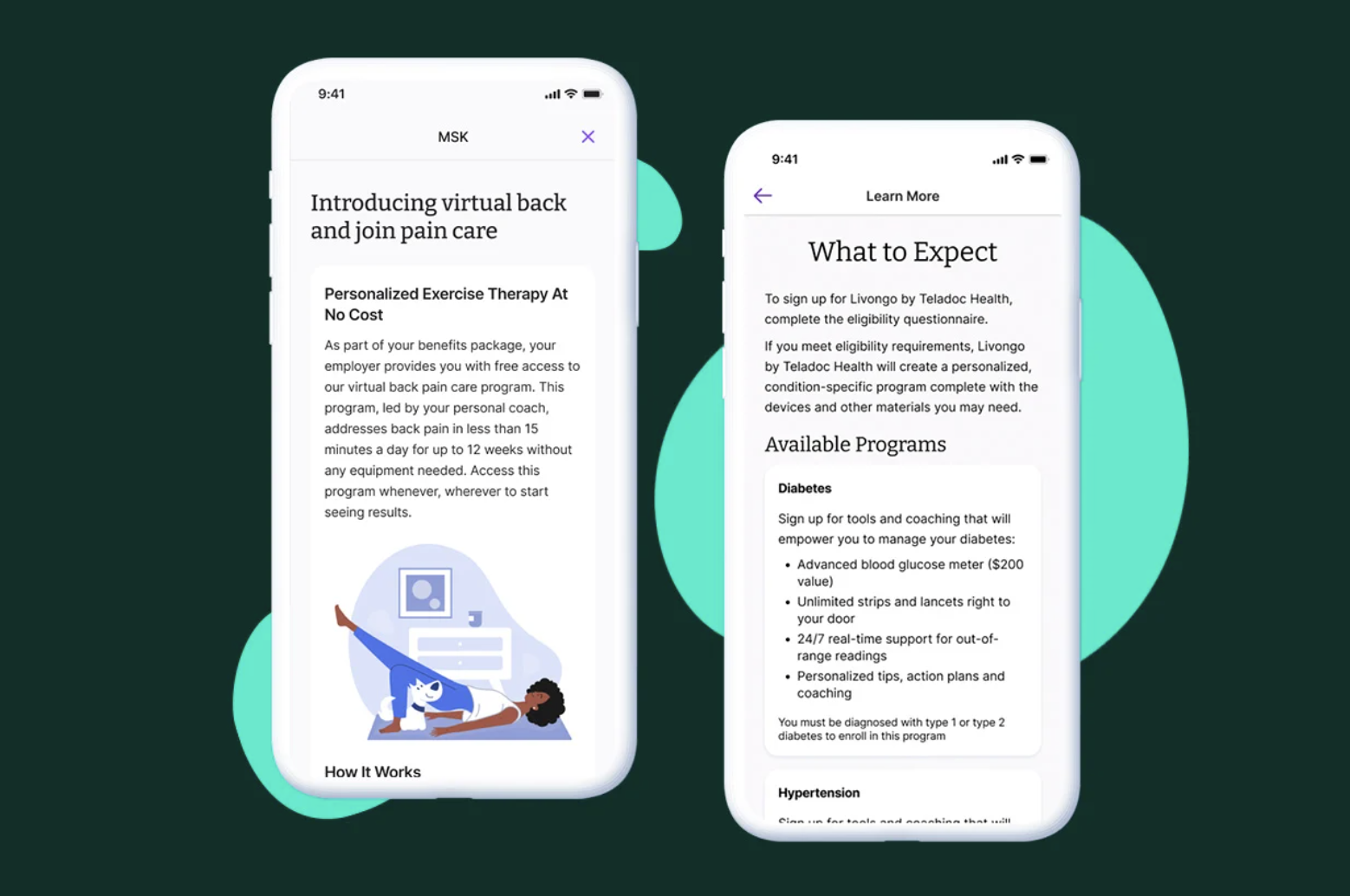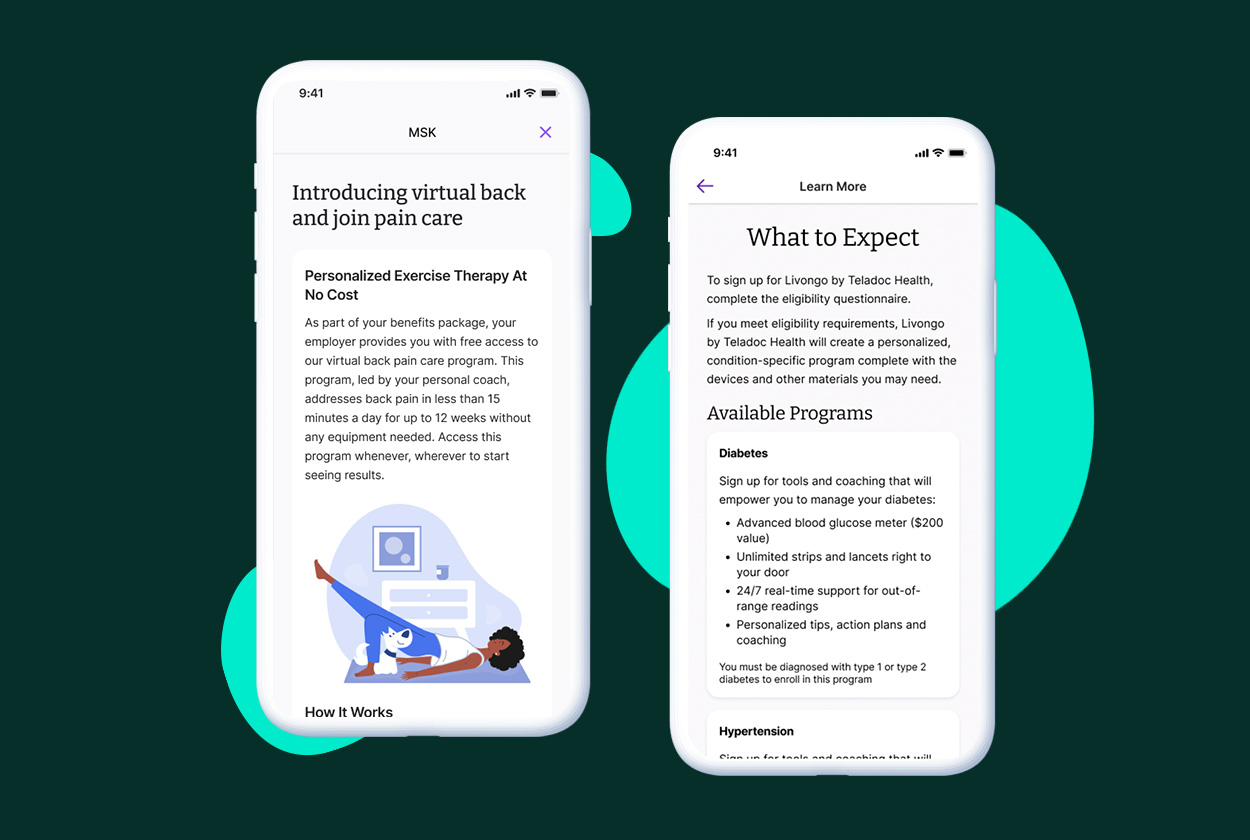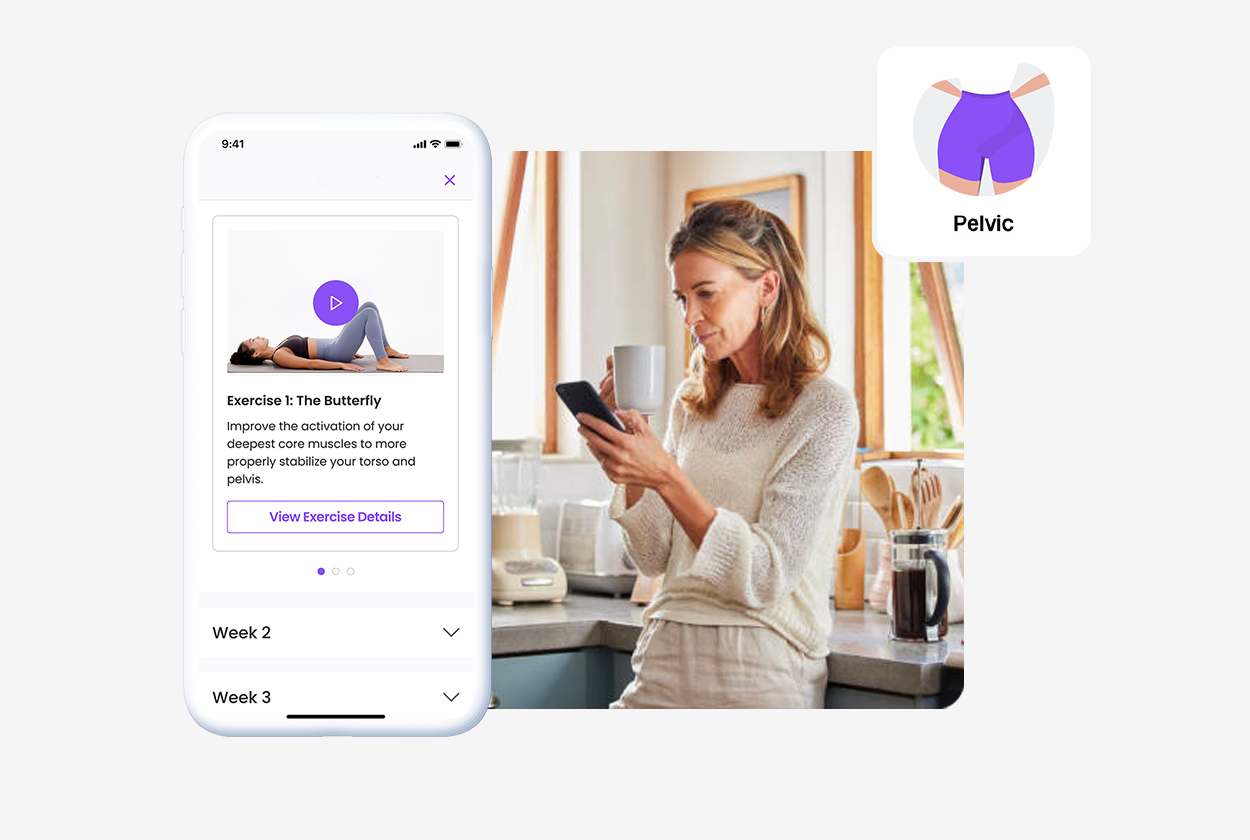HealthJoy’s Innovative Approach to MSK Therapy
How connecting the brain and body fosters better results Musculoskeletal (MSK) conditions affect millions of Americans each year. Representing over...
Connected Navigation Platform
Guiding to high-value care
Behavioral Health
Foster a mentally healthy workplace
EAP
Supporting holistic wellbeing
Virtual MSK Care
Reimagining musculoskeletal care
Virtual Primary Care
Powered by smart navigation
Surgery Centers of Excellence
Best-in-class surgical outcomes
Virtual Urgent Care
Immediate care, any hour of the day
Chronic Care
A new approach to chronic care
Integrations
Flexible to any strategy

The past few years have seen a boom in the number of Americans who are searching for mental health solutions. The demand for therapy, medication, and support groups are seeing booming growth. And the stats back up what we already sensed to be true. According to the American Psychological Association (APA), psychologists are reporting significant increases in demand for anxiety and depression treatment. The APA found that 74% of psychologists reported an increase in demand for anxiety treatment since the beginning of the pandemic. McKinsey & Company had similar findings in the broader healthcare space. They reported that in April 2020, “overall telehealth utilization for [visits and care] was 78 times higher than in February 2020.”
The uncertainty and fear brought on by coronavirus put people in unimaginably difficult situations, and mental health professionals helped many of us navigate these complex, difficult situations. However, these therapy sessions looked dramatically different than they had in the past.
We swapped office visits for Zoom therapy sessions. No waiting rooms, just us in our homes. The same couch we sat on while binging Tiger King or The Last Dance became where we took our weekly appointments. It was a true paradigm shift for how therapy is conducted.
APA statistics show us just how big this shift was:
With virtual therapy being more used than ever, why is there still a stigma around it? Like anything new, people can be skeptical of it and wonder if it’s as effective and safe as what they’ve become accustomed to.
Let’s break down the top four myths about virtual therapy and look at why it can be an effective, life-changing option.
The cost of therapy is one of the greatest barriers to care for many Americans. Healthcare Bluebook estimates that the average price for traditional therapy is about $174.
This is where virtual therapy can be a game-changing option that’s more cost-efficient for patients.
Virtual solutions usually charge between $50 to $80 on average before insurance reimbursement. Those reimbursements can further shrink the cost you have to pay per session.
Employers are also joining the virtual therapy movement. Many have begun to offer teletherapy as a part of their benefits packages, especially with increasingly remote workforces. It’s not uncommon to have employees all over the country now. A virtual option allows coverage for all employees, regardless of where they call home.
That impact can be massive, especially when considering how many underserved communities there are when it comes to mental health.
According to the APA:
Virtual therapy isn't only the cheaper option — it can oftentimes provide treatment options to those who have historically had none.
There's a widespread myth out there that virtual therapy isn't as effective as traditional therapy. People worry that their providers will be less qualified or that the connection with their provider won't be as strong as it would be in person.
However, research on this topic tells us just the opposite.
Psychology Today provides us with a few examples of studies that prove how effective virtual care can be:
It’s understandable that patients can feel a little uneasy when swapping in their usual office visits for online visits. They may feel worried that their personal information will be at risk when using an online platform they have never used before.
We recommend using an HIPAA-compliant platform to establish the safest connection. HIPAA laws protect a patient’s personal information and any sensitive information that’s shared during a therapy session. These protections can help patients to feel more secure and lead to more productive sessions.
This may be the biggest misconception of them all. Virtual therapy isn’t a last resort or emergency psychiatric service. It isn't an emergency number — it isn't a suicide hotline — and it isn't intended for use in life or death situations.
All of those are vital resources (as a reminder, the new Suicide & Crisis Lifeline number is: 9-8-8) that help thousands each year. However, think of virtual therapy as a doctor’s office visit and these hotlines as 9-1-1.
Regardless of how you seek mental healthcare, you’re taking an important step in the right direction!
Therapy can help patients deal with past traumas, teach lifelong skills for dealing with hardships, and improve overall quality of life. According to the APA, “the results of psychotherapy tend to last longer than psychopharmacological treatments and rarely produce harmful side effects.” They also report that about 75% of people who enter psychotherapy show some benefit.
Our world is becoming increasingly virtual each year, and therapy is currently in its virtual renaissance. While myths and misconceptions have swirled about virtual therapy in the past, it’s proven to be a valuable, cost-effective way to improve patients’ quality of life.
Learn more about how HealthJoy can help virtualize your benefits suite and provide the best solutions for your company and your people.

How connecting the brain and body fosters better results Musculoskeletal (MSK) conditions affect millions of Americans each year. Representing over...

Suffering from a musculoskeletal (MSK) condition can make it feel like you’re on the sidelines in your own life. This pain can take you away from the...

Pelvic floor disorders (PFD) are very common and can occur at any age. A recent study, conducted by The University of Iowa College of Medicine, found...